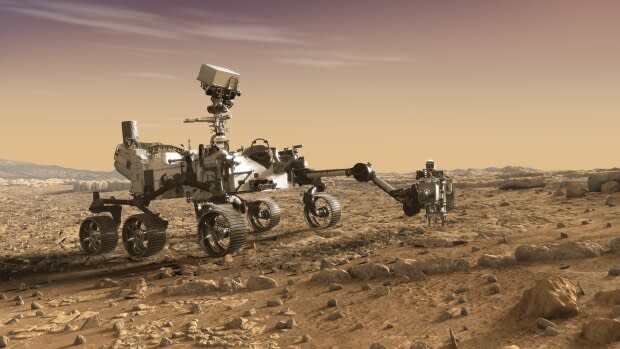Mars rocks: Edmonton geologist to steer Mars rover in collection of rock, soil samples

Chris Herd has landed an out-of-this world opportunity.
Herd, an Edmonton geologist, will decide which Martian meteorites are collected on NASA's 2020 expedition to the Red Planet.
The mission, launching this summer and arriving on Mars next February, will be the first attempt to collect Martian rock and dust samples.
The rover will collect core samples of the most promising rocks and soils it encounters and cache them until a separate mission retrieves them and brings them to Earth many years from now.
Taking part in the mission is a childhood dream fulfilled, Herd said.
"It's super exciting. It's amazing," Herd said in an interview with CBC News. "There is something about Mars that really sparked my imagination.
"I think I was 13 when I decided I wanted to be there when the rocks came back from Mars, and this is the first real step that NASA and other space agencies have taken to actually take samples back."
The scientific waiting game
Herd, a professor in the Department of Earth and Atmospheric Sciences and curator of the University of Alberta Meteorite Collection, has a dual role in the mission.
He was selected as one of 10 designated experts on the project and one of two returned-sample scientists.
In these positions, Herd will decide which outcroppings of rock are most likely to provide key information about Mars's geological history.
"The rover is equipped with all these instruments to tell us what the rocks are made of, but it has the additional ability to core that sample out, seal it in a tube and leave for eventual return to Earth."
The rover has a life span of one Mars year, about 687 Earth days.
A subsequent mission, still in the planning stages, would eventually retrieve the samples.
"It's too expensive to do it all at once," Herd said.
"It would require another rover to come and collect the samples, put them in a rocket, blast them off the surface of Mars where it would rendezvous with an orbiter around Mars that would then come back to Earth."

'Water was there and, potentially, life'
The rover will be scouring the Jezero Crater, an ancient lake bed, for signs of past microbial life.
"The river and lake likely existed three-and-a-half or four billion years ago and the sediments have been preserved ever since," Herd said.
The samples gathered could not only provide a glimpse into the past but address fundamental questions about the potential for future human life on Mars, Herd said.
"Where we are going is where the action is," he said. "Water was there and, potentially, life and that's ultimately the goal of this mission, to search for signs of life."
As for Herd, he hopes he won't be retired by the time the rocks made it to Earth.
"My role is for at least the next three years," he said. "The samples would come back sometime in 2031 or likely a little later.
"It's a huge undertaking."

